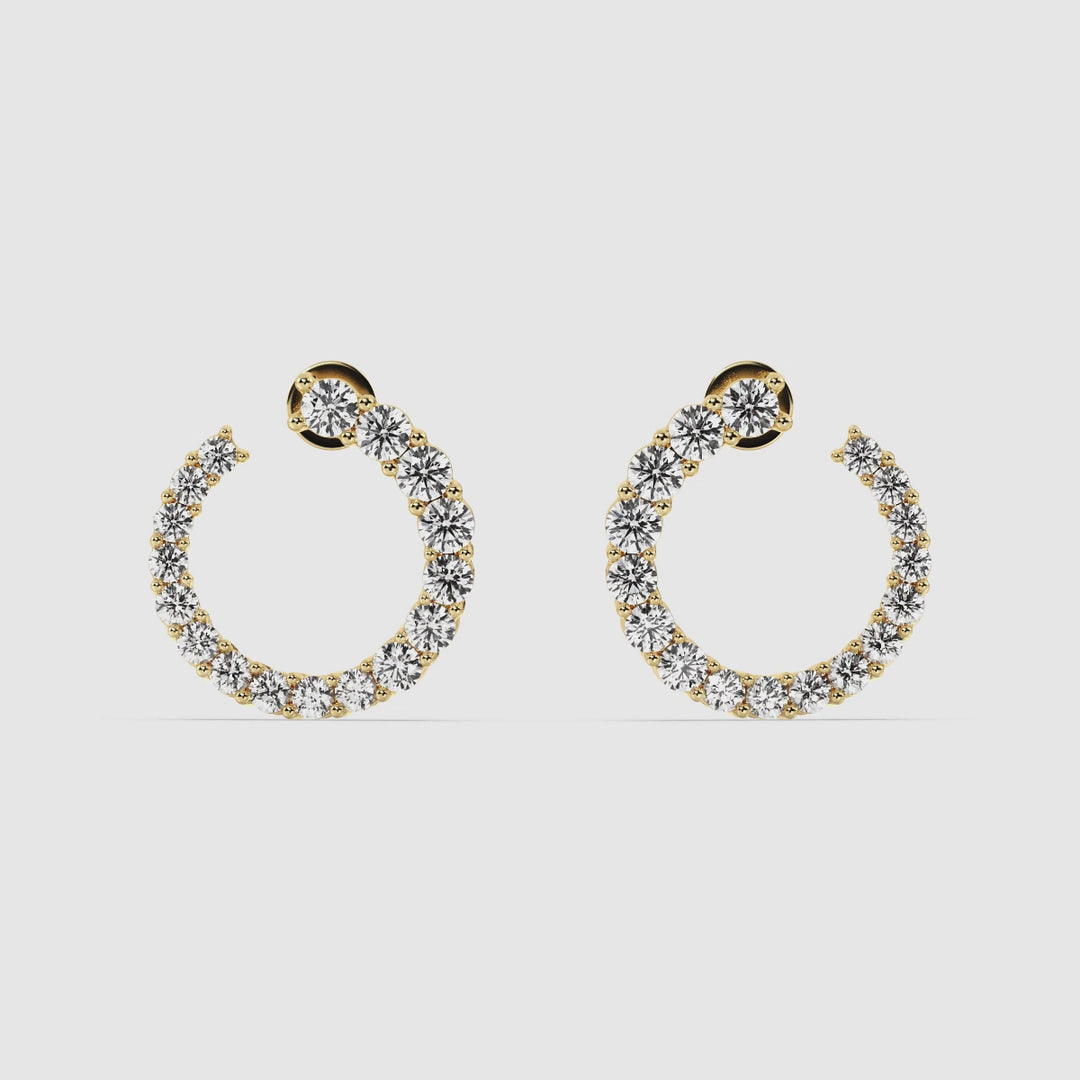
Introduction
Diamonds have long been adored for their brilliance and allure, representing eternal love and extravagance. However, the traditional allure of mined diamonds is currently being challenged by another contender: lab diamonds or mined. As innovation advances, so do the options for consumers looking for ethical, sustainable, and equally staggering alternatives to natural diamonds. In this article, we’ll dig into the distinctions between lab diamonds and mined diamonds, examining everything from their composition and environmental impact to their expense, quality, and cultural significance.
Composition and Design
Chemical Composition: Both lab-developed and mined diamonds are made out of unadulterated carbon atoms arranged in a crystal lattice structure. The key contrast lies in their origin: while mined diamonds are formed naturally under outrageous tension and heat profound inside the Earth’s mantle more than millions of years, lab diamonds are created in controlled environments that replicate these natural conditions.
Contrasts in Origin
Natural Formation vs. Artificial Synthesis: Mined diamonds are extracted from mines, where large amounts of rock and soil should be moved to access diamond-rich stores. This interaction has significant environmental impacts, including habitat destruction, soil erosion, and water pollution. In contrast, lab-developed diamonds are created utilizing advanced technological cycles that require significantly less energy and water and produce minimal environmental disruption.
Environmental Impact
Mining Impact on the Environment: The environmental impression of mining can be substantial, with deforestation, soil erosion, and disruption of biological systems being common consequences. Additionally, mining operations frequently require large amounts of water and energy, contributing to carbon emissions and climate change.
Sustainability of Lab Diamonds: Lab-developed diamonds are frequently touted as a more sustainable alternative because of their minimal environmental impact. They require less energy and water to deliver, produce no mining waste, and can be created utilizing renewable energy sources.
Quality and Virtue
Clarity and Flaws: Both lab-developed and mined diamonds go through rigorous grading cycles to assess their clarity, which alludes to the presence of internal and external flaws or inclusions. Lab-developed diamonds can at times have less inclusions because of the controlled environment where they are developed.
Color Grading: Diamonds come in various colors, with the most valuable being colorless or displaying a rare and extraordinary tone. The two kinds go through color grading based on a scale that ranges from D (colorless) to Z (light yellow or brown). Lab-developed diamonds can display exceptional color virtue because of the controlled development conditions.
Cost Considerations
Factors Impacting Value: The expense of diamonds is affected by factors like size, color, clarity, and cut (the 4Cs). Mined diamonds can be significantly more costly, especially for larger stones or those with exceptional color and clarity grades.
Value Comparison: Lab-developed diamonds are typically evaluated lower than mined diamonds of comparable quality. This cost contrast mirrors the diminished expenses associated with production and the absence of mining-related costs.
Ethical Considerations
Sans conflict Obtaining: One of the main ethical concerns associated with mined diamonds is the issue of conflict diamonds, also known as blood diamonds, which are mined in war zones and offered to finance conflict and nationwide conflicts. The Kimberley Cycle Certification Plan aims to forestall the trade of conflict diamonds, however challenges remain in ensuring compliance.
Ethical Concerns with Lab Diamonds: While lab-developed diamonds eliminate the issue of conflict diamonds, ethical concerns may in any case arise regarding the working conditions of those engaged with diamond synthesis and the broader ethical implications of synthetic gemstone production.
Durability and Longevity
Hardness and Wear Resistance: Diamonds are eminent for their exceptional hardness, scoring an ideal 10 on the Mohs scale of mineral hardness. Both lab-developed and mined diamonds are equally durable and resistant to scratching, making them ideal for everyday wear in adornments.
Lifespan Comparison: Diamonds are among the most durable materials on Earth, capable of lasting for generations with appropriate care and maintenance. Whether lab-developed or mined, diamonds are valued for their longevity and enduring beauty.
Certification and Recognition
Industry Standards: Both lab-developed and mined diamonds are dependent upon industry standards and certifications that guarantee their quality and authenticity. The Gemological Organization of America (GIA) and other reputable gemological laboratories give grading reports that detail the characteristics of each diamond, including its 4Cs and any recognizing features.
Consumer Perception: The perception of lab-developed diamonds among consumers has advanced significantly lately, with increasing recognition of their quality, sustainability, and value. Many consumers view lab-developed diamonds as a socially responsible decision that aligns with their values.
Market Patterns
Consumer Inclinations: There is a developing pattern among consumers, particularly more youthful generations, towards ethical and sustainable items, including lab-developed diamonds. This shift is driven by awareness of environmental issues and concerns about the ethical implications of traditional diamond mining.
Market Development Projections: The market for lab-developed diamonds is expanding rapidly, determined by technological advancements, increasing consumer awareness, and moving inclinations towards sustainable and ethical items. Industry projections indicate continued development in the market share of lab-developed diamonds before very long.
Cultural and Representative Significance
Traditional Values: Diamonds have long held representative significance in various societies, addressing adoration, responsibility, and status. While traditionalists may favor mined diamonds for their natural origin and historical significance, others are embracing lab-developed diamonds for their cutting edge appeal and ethical advantages.
Present day Perceptions: In today’s general public, the perception of diamonds is developing beyond their traditional associations. Many consumers are placing greater value on transparency, sustainability, and ethical obtaining while making purchasing decisions, affecting their perceptions of both mined and lab-developed diamonds.
Picking Between the Two
Factors to Consider: While picking between lab-developed and mined diamonds, consider factors like personal values, budget, environmental impact, and wanted characteristics. The two sorts offer special advantages and appeal to various inclinations.
Personal Inclinations: Ultimately, the decision between lab-developed and mined diamonds is a personal one that ought to align with your values, inclinations, and budget. Whether you prioritize ethical considerations, environmental impact, or traditional symbolism, there is a diamond option that meets your criteria.
Fantasies and Misconceptions
Common Fantasies Exposed: There are several legends encompassing lab-developed diamonds, including misconceptions about their quality, value, and authenticity. Contrary to these fantasies, lab-developed diamonds are chemically and physically identical to mined diamonds, offering the same brilliance and durability.
Fact-Based Comparisons: Various investigations and comparisons have shown that lab-developed diamonds display comparable quality and beauty to mined diamonds, frequently at a lower cost and with minimal environmental impact. These facts challenge outdated perceptions and feature the advantages of picking lab-developed diamonds.
Maintenance and Care
Cleaning and Upkeep: Legitimate care and maintenance are essential for safeguarding the beauty and brilliance of diamonds, regardless of their origin. Regular cleaning with gentle soap and water, along with professional inspections and settings checks, can guarantee that your diamond adornments remains radiant and secure.
Special Considerations: While diamonds are exceptionally durable, they can in any case be vulnerable to chipping or damage whenever exposed to outrageous conditions or harsh handling. Avoid wearing diamond gems during activities that may open it to potential damage, and store it in a safe place when not being used.
Conclusion
In conclusion, the decision between lab-developed and mined diamonds includes weighing various factors, from environmental impact and ethical considerations to cost, quality, and personal inclinations. The two sorts of diamonds offer exceptional advantages and appeal to various consumer values. As innovation continues to advance and consumer awareness develops, the demand for ethical and sustainable diamond alternatives is probably going to increase. Whether you pick a lab-developed diamond for its eco-accommodating credentials or a mined diamond for its immortal allure, the decision mirrors your values and priorities.






